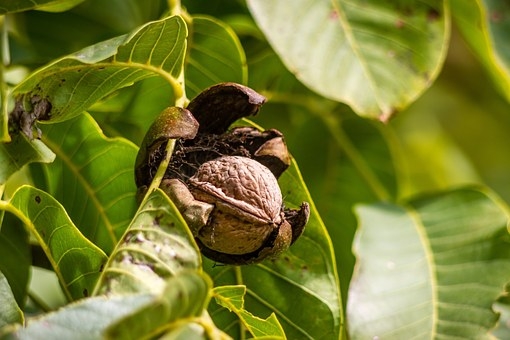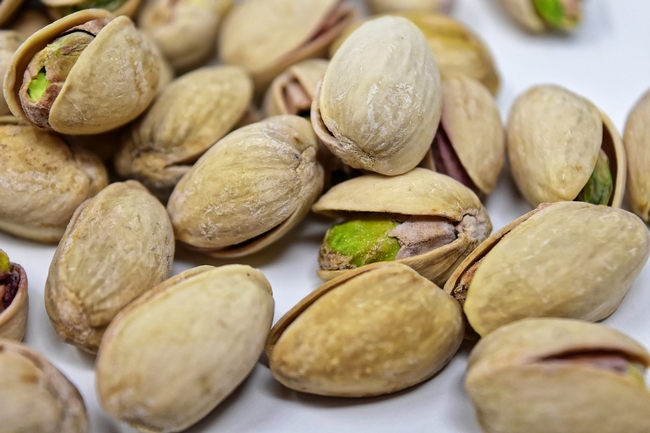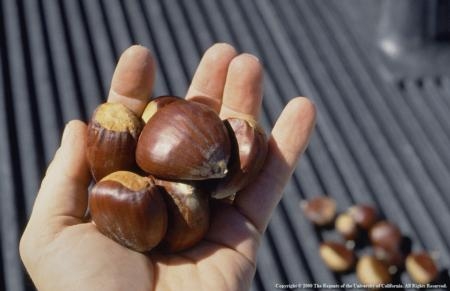
Storing and preserving fresh nuts
One of the many wonderful things about California's climate is that in many regions of the state you'll find orchards of walnut, almond, pecan, pistachio or chestnut trees. You may be growing or planning to grow one or more of these trees in your yard so you can enjoy consuming the nuts. But do you know how to safely store, and preserve these fresh nuts?
There are just a few simple steps to follow. First, be sure to promptly remove the hull (the fibrous outer covering) that may still be remaining on some of the nuts. (If you have hulled walnuts before you will know they'll stain your hands brown, so you should wear gloves to hull walnuts.)
During this time of COVID-19, you may be tempted to wash your fresh nuts, but don't. Washing the nuts in their shell could increase their moisture and provide the environment for mold or bacteria to grow. Although not required to safely store the nuts, to decrease the likelihood of walnuts, almonds, pecans and pistachios developing mold, you may want to dry them. For walnuts and almonds, spread them out preferably single layer on a flat screen or tray that allows good air circulation. To prevent birds and other critters from making off with them while they are drying, cover them with another screen or plastic netting. Stir and move the nuts around daily.
It will take several days for them to dry. To determine when they are sufficiently dry, remove the shell from several nuts. Break apart the almond kernels, or walnut meat. If they are rubbery, they're not dried sufficiently. If they are crisp or brittle when broken, then they are dried adequately.
For pecans, they should be dried slowly in air temperatures 75–85 degrees Fahrenheit to prevent the shells from cracking. A fan blowing on the nuts will speed up the drying process, which can take up to 10 days. The pecans are dry when they're brittle and the membrane between the kernel halves separate easily from the kernels.
Pistachios can be dried in the sun on a plastic tarp, or they can be dried in the oven at 140–160 degrees Fahrenheit for 10–14 hours. They are dried when the kernels are crisp, but not brittle.
Before consuming or storing at room temperature, fresh home-grown walnuts, almonds, pecans, pistachios or chestnuts, or those bought at farm stands, pasteurize them to kill any insects or insect eggs. To pasteurize, simply place them in the freezer for 48 hours. (Make sure your freezer is set at 0 degrees Fahrenheit or lower.)
To store your walnuts, almond, pecans or pistachios, place them in clean moisture free, odor tight packaging, such as glass or plastic jars or other containers. The nuts can be stored shelled or unshelled. They can be stored up to a year in your refrigerator set at 40 degrees Fahrenheit or lower. Almonds can be stored in your freezer (set at 0 degrees Fahrenheit or lower) for a year or more, walnuts and pecans for two years plus, and pistachios for three years.
Chestnuts are different from the other nuts because they're more like potatoes than tree nuts. They usually develop mold within two weeks if stored at room temperature. Unshelled chestnuts can only be stored for two to three months in the refrigerator, but shelled chestnuts can be stored for a year in the refrigerator. Both shelled and unshelled chestnuts can be stored in the freezer for one year or more.
Enjoy your stored nuts throughout the year!
For more information about the UC Master Food Preserver Program, including the Food Preservation Video Library, visit mfp.ucanr.edu.




Posted by Cynthia Maende on May 15, 2021 at 11:42 PM